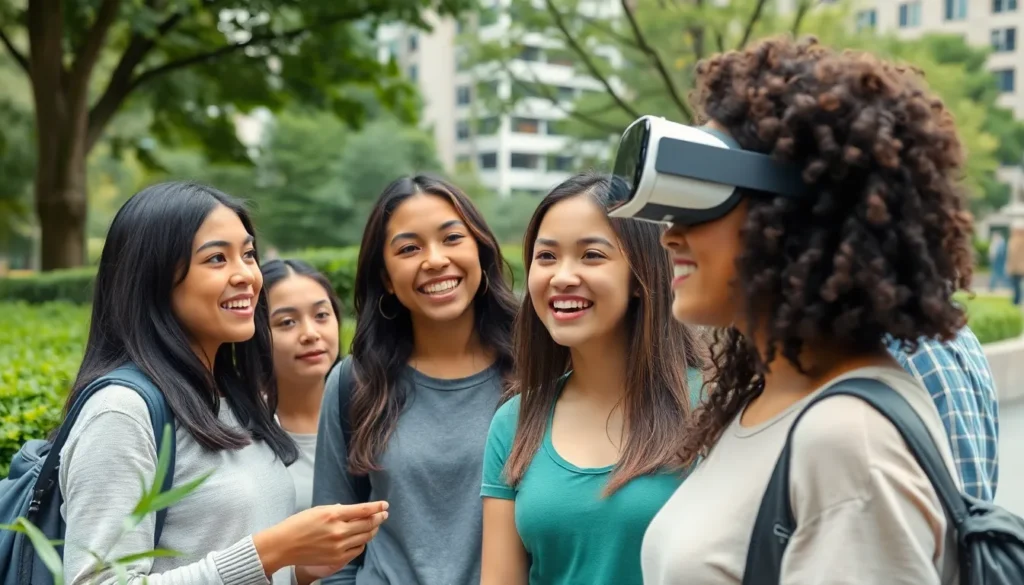In a world where PowerPoint presentations can make or break a meeting, the pressure to create eye-catching slides has never been higher. Enter ChatGPT, the AI that’s not just good at answering questions but might just become your new presentation sidekick. Imagine having a virtual assistant that can whip up slides faster than you can say “Can you believe I forgot to include that data?”
But can ChatGPT really create slides? The answer might surprise you. With its knack for generating content and ideas, it’s like having a brainstorming buddy who never runs out of steam. So, if you’re tired of staring at a blank screen, it’s time to explore how this AI can transform your slide-making game and leave your audience wondering if you’ve suddenly become a design guru.
Table of Contents
ToggleOverview of ChatGPT’s Capabilities
ChatGPT serves as an innovative tool for creating slides, adapting to various presentation needs. Its capabilities encompass advanced natural language processing and effective text generation.
Natural Language Processing
Natural language processing, or NLP, enables ChatGPT to understand and interpret user inputs efficiently. It analyzes context and nuances, allowing it to generate relevant content based on specific queries. This technology facilitates seamless communication, making it easier for users to articulate ideas without needing extensive language skills. Often, this leads to well-structured outlines that can be transformed into visually appealing slides. Integrating NLP ensures that presentations resonate with audiences, enhancing engagement and comprehension.
Text Generation
Text generation stands as one of ChatGPT’s core strengths. Utilizing sophisticated algorithms, it creates coherent and contextually appropriate text designed to fit various themes and topics. Users benefit from this capability, receiving tailored content that meets their specific presentation needs. Notably, ChatGPT can produce bullet points, summaries, and detailed paragraphs that can easily be inserted into slide decks. This functionality streamlines the slide creation process, allowing individuals to focus on design while relying on AI for content.
Exploring Slide Creation with ChatGPT

ChatGPT streamlines the process of creating slides by offering support in content generation. This AI tool transforms ideas into comprehensive presentations that captivate audiences.
Process of Creating Slides
Creating slides with ChatGPT involves several steps. First, users input their topics and specific content requirements. Next, ChatGPT generates a structured outline. This includes key points, subpoints, and suggestions for visuals. After refining the outline, users can request text for each slide, receiving tailored bullet points and summaries. Enhancing collaboration, ChatGPT adapts based on user feedback and preferences, ensuring presentations align with individual styles.
Features and Limitations
ChatGPT boasts multiple features designed to enhance slide creation. Users benefit from its advanced natural language processing, producing relevant and coherent text. Customization options allow for varied presentation styles suitable for different audiences. However, limitations exist. ChatGPT often lacks real-time design capabilities, meaning users must independently manage slide layouts and visuals. Additionally, it may provide occasional inaccuracies in data or context, requiring users to verify information for quality assurance.
Real-World Applications
ChatGPT finds significant uses in various fields, particularly in education and business. Its ability to generate structured content enhances presentations across the board.
Educational Use Cases
Teachers and students benefit from ChatGPT’s capabilities in creating educational presentations. It assists educators in developing lecture slides and lesson materials that engage students. Students can generate summaries and bullet points for their research topics, streamlining their study process. By using ChatGPT, both parties can enhance learning experiences, maximizing the effectiveness of educational content.
Business Presentations
In the business realm, professionals rely on ChatGPT to create compelling presentations. It provides tailored content suited for different audiences and objectives, improving communication. Managers can quickly generate reports and project updates, optimizing meeting preparations. Teams can utilize ChatGPT to develop persuasive pitches, capturing stakeholder attention efficiently. By integrating this AI, businesses can elevate the quality of their presentations while saving time.
User Experiences and Feedback
Users express a variety of experiences while utilizing ChatGPT for slide creation. Feedback highlights both positive aspects and common challenges encountered during the process.
Positive Testimonials
Many users praise ChatGPT for its efficiency in generating content. Users report that it significantly reduces the time spent on slide preparation. One user mentioned receiving concise bullet points that perfectly summarized complex topics. Another user appreciated the AI’s ability to produce engaging outlines, inspiring creative input for visuals. Teachers particularly noted improvements in lesson planning, citing ChatGPT’s role in enhancing lecture slide quality. Business professionals echoed similar sentiments, sharing how their presentations became more impactful with AI-generated content. Overall, these positive testimonials emphasize ChatGPT’s capability to streamline the slide-making process while maintaining high-quality outputs.
Common Challenges
Despite the benefits, challenges persist in using ChatGPT for slide creation. Users often find that the AI occasionally generates content that requires refinement. Missing contextual nuances occasionally leads to inaccuracies, necessitating manual adjustments. Additionally, some users express frustration with the lack of real-time design capabilities. Slide layouts remain the user’s responsibility, which can complicate the design process. Users also indicate a learning curve in fully harnessing ChatGPT’s potential. Adapting prompts to receive the desired content can be tricky for some, highlighting the importance of understanding how to interact with the AI effectively. These common challenges inform potential areas for improvement and guide users in optimizing their experience.
ChatGPT stands out as a valuable tool for anyone looking to streamline the slide creation process. Its ability to generate structured outlines and tailored content allows users to focus on design while ensuring their presentations are informative and engaging.
Though it has limitations like the lack of real-time design capabilities and the need for user verification, the benefits often outweigh the challenges. By integrating ChatGPT into their workflow, educators and business professionals can enhance communication and save time, ultimately leading to more impactful presentations. Embracing this AI technology can transform how individuals approach slide creation, making it a powerful ally in the quest for effective communication.









